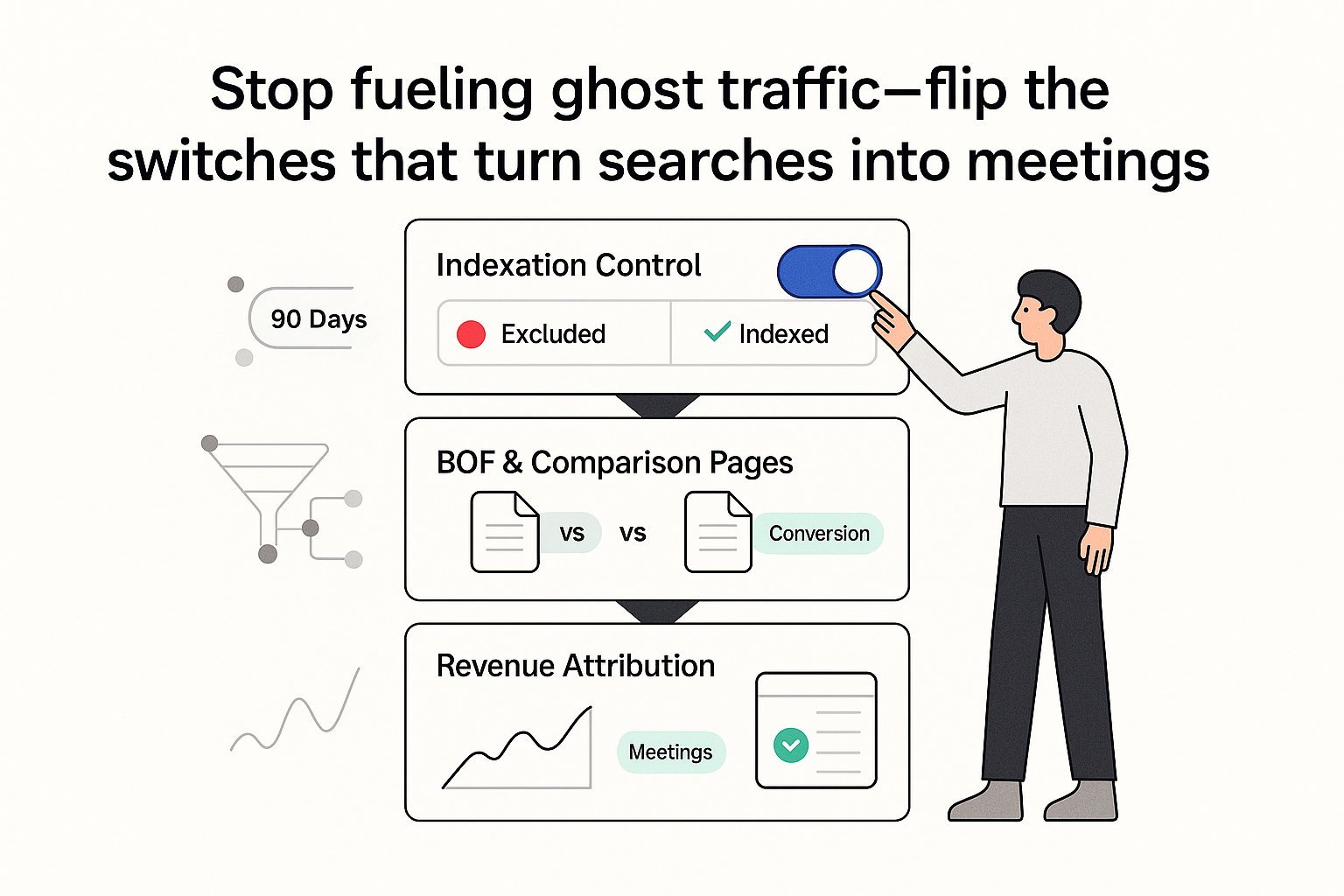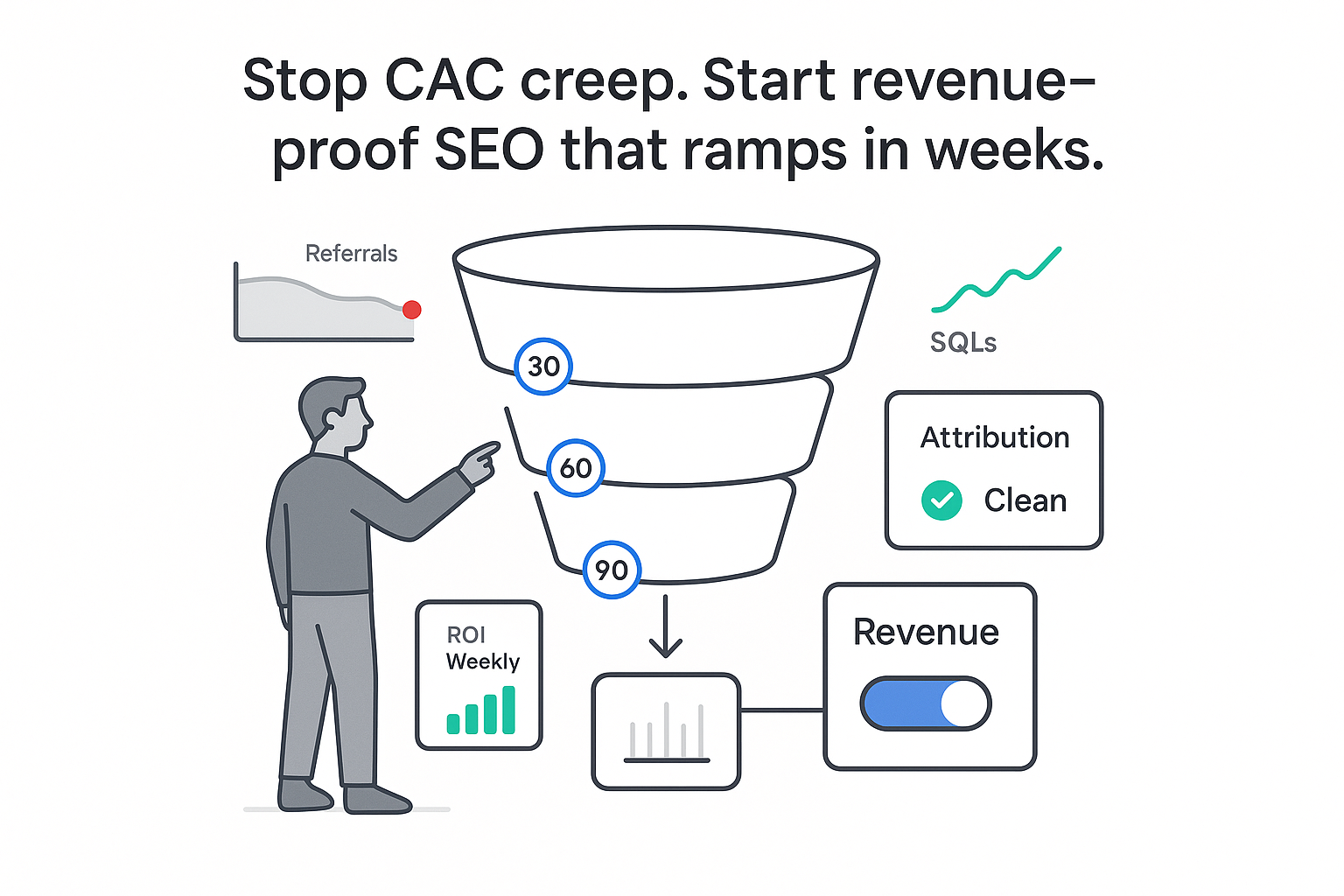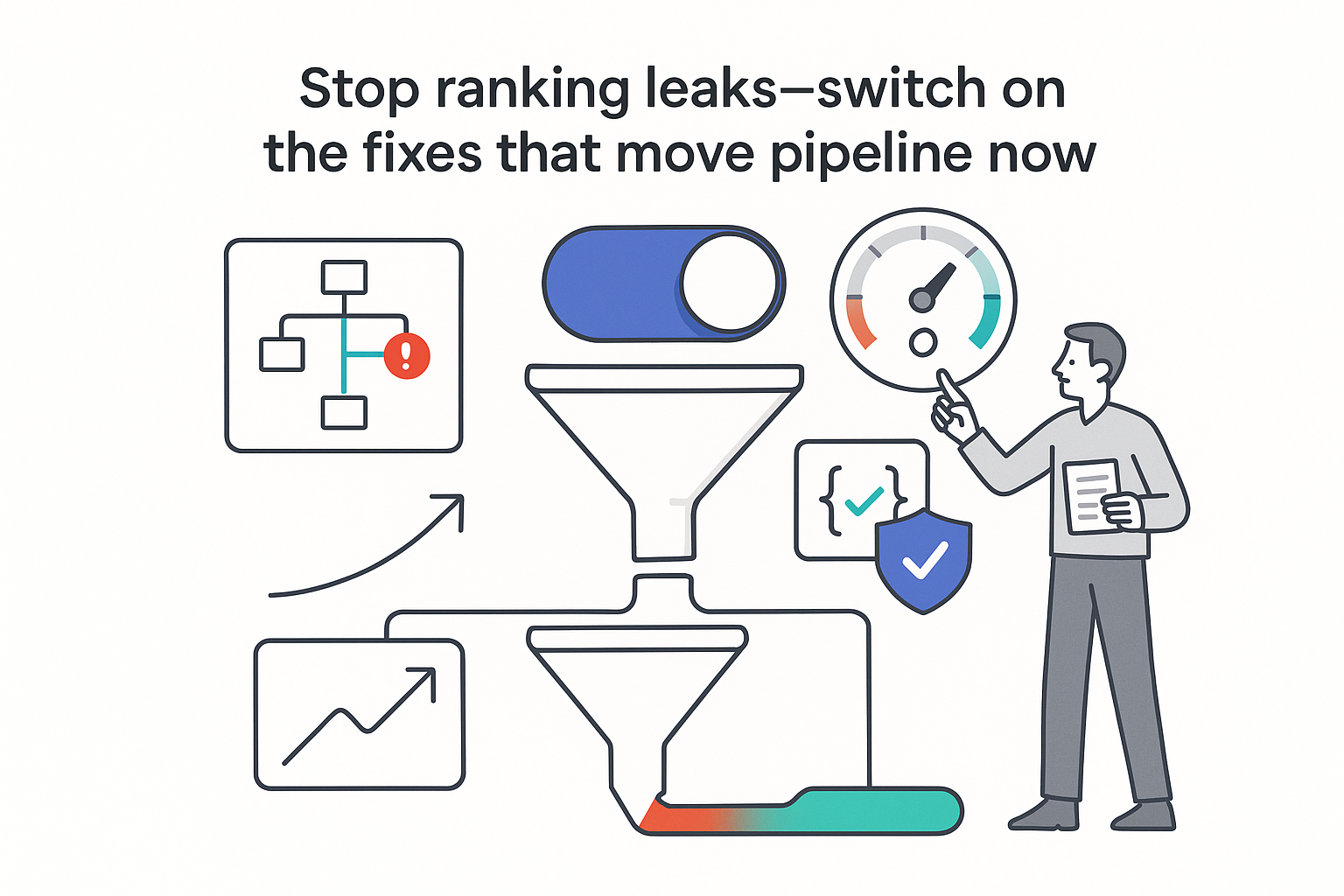If I run a B2B service company, I don’t need more noise. I need pipeline. I need clarity on what moves this quarter, what compounds next quarter, and what will still pay off a year from now. That is where a sharp B2B SEO strategy earns its keep. Done right, it turns intent into meetings, meetings into deals, and it lets me scale without throwing more at paid channels.
ROI, timelines, and pipeline math
I start with measurable outcomes on a realistic clock. Leading indicators often show up within 30 to 60 days when I fix indexation problems and upgrade bottom-of-funnel pages. Pipeline impact follows as those pages begin to rank and convert; revenue impact depends on the sales cycle and typically trails by another one to three quarters. Net-new pages usually need time to mature - industry studies (for example, Ahrefs analyses of ranking timelines) consistently show that most pages take months to break into competitive SERPs - so I separate quick signals from durable gains to avoid magical thinking.
I keep the math visible so decisions stay honest: traffic × intent fit × CTR × CVR to SQL × ACV × win rate. Here, “traffic” means qualified sessions for pain and solution terms; “intent fit” is the share of that traffic with real need and budget; CTR is clickthrough from SERP to page; CVR to SQL is conversion to a sales-qualified lead; ACV is average contract value; and win rate is closed-won over total SQLs. When each factor improves a bit, pipeline grows a lot.
Three fast wins I prioritize because they tend to move numbers in weeks, not months:
- Fix indexation and crawl gaps by cleaning sitemaps, resolving noindex conflicts, and removing dead weight that dilutes internal linking.
- Patch top service pages with pricing ranges, a clear process, FAQs addressing real objections, proof snippets, and an embedded booking option to lift CVR to SQL.
- Publish one comparison page and one alternatives page for a core market term to capture buyers who are evaluating now.
As a sanity check, I look for evidence that change matters. One recent rollout indexed seven new service and comparison pages within 45 days, lifted CTR by 38% on five priority terms, and moved demo CVR from 1.1% to 2.4% - doubling SQLs without a traffic bump. Results vary by domain authority, competition, and sales motion, but the mechanism is repeatable: better intent capture reduces blended CAC while building assets that keep working.
Service pages that convert
Bottom-of-funnel (BOF) pages win deals, so I build or upgrade them first. I target “service for industry/use case” phrases that mirror buying language (for example, “SOC 2 consulting for fintech” or “HubSpot implementation for healthcare”). The page opens with a short overview and a table of contents for scannability, then a crisp positioning statement that sets scope and fit. I add pricing ranges or billing models with context to calm anxiety and filter out bad fits, a clear step-by-step process with visuals, FAQs tied to objections I hear in sales calls, and proof blocks with logos, quotes, or measurable outcomes. I close with conversion assets - a short explainer video can help - and a low-friction way to book time.
Technically, I use structured data appropriate to the content type (for example, Service and Organization). I don’t rely on FAQ rich results given recent changes to how often they appear, but I still mark up content accurately for clarity. I route internal links from relevant articles and case studies to the BOF page using natural anchor text that matches searcher language. The KPI set stays simple: indexed status, rankings for qualified “service for industry” terms, and page-level conversion to SQL and booked meetings.
If I’m tempted to hide pricing entirely, I remember that transparent ranges usually improve meeting quality and close rates. In B2B, uncertainty is friction; clarity is a qualifier.
Decision content that reduces friction
B2B buyers compare in their heads; I make those comparisons explicit. I publish side-by-side “Competitor vs Me” and “Me vs Competitor” pages for the top two alternatives, a “Best [service] companies” explainer with criteria and sourcing, and “[tool] alternatives” if my service complements or replaces software. I lead with use-case fit - who should pick which option and why - then show my math with weighted criteria, side-by-side tables for scope, coverage, contracts, and service depth, and real screenshots or diagrams instead of vague claims.
Trust hinges on fairness. I state methodology, cite sources where I can, and avoid self-serving review markup that violates platform rules. The micro-conversion design is simple: a relevant call to action near each section so readers can act when readiness strikes. I measure assisted conversions in the CRM, on-page CTA CTR, and engagement signals like scroll depth to confirm that high-intent readers are consuming comparison sections.
Proof content that signals outcomes
Case studies shouldn’t read like novels; they should read like pipeline. I keep to a compact arc: the business pain and stakes; the approach I took and the constraints; the results tied to sales metrics (MQLs to SQLs to revenue with time frames); and tangible proof like quotes and screenshots. I add a plain-English summary near the top - “12 net-new SQLs in 60 days; two deals closed; $280k in new ARR” - so busy executives don’t miss the point.
I target queries like “[service] case study [industry]” and interlink each case study to its matching service page to consolidate relevance. Schema.org’s CaseStudy type can help machines interpret the content, though rich-result eligibility is not guaranteed. Each month I review conversions from case study pages, assisted conversions when a case study touch appears in the journey, and rankings for “case study” terms aligned to my service lines.
Measurement that proves revenue
Attribution in B2B is messy, but I keep it simple enough to make decisions. First, I define the handful of conversion events that actually qualify leads in my model (for example, demo request, booking, high-intent contact submission, and relevant file downloads). I make sure source details, landing pages, and where possible keyword proxies get passed into the CRM so opportunities can be tied back to search demand. When I use paid media alongside SEO, I connect offline conversions back to ad platforms via click IDs so optimization isn’t blind to deal quality.
To avoid dashboard theater, I maintain two views. A weekly execution view covers the work that compounds - index coverage changes, CTR on top queries, page performance fixes, content shipped, and links earned from reputable, relevant publications. A monthly business view tracks qualified leads, SQLs, pipeline added, revenue influenced, CAC trend, and time to close by page. I spot-check data quality: test forms with real tracking parameters, confirm privacy controls don’t block core events, and reconcile analytics counts with CRM records on a sample week. Finally, I set “by page” targets for BOF and decision assets so accountability lives where impact should.
Privacy shifts and AI-generated SERP summaries are changing click patterns. That’s fine. Educational pages still matter, but BOF and proof pages usually win faster because they align to decisions. If I can show the chain from keyword to page to lead to won revenue, budget stays safe when channels fight for credit.
When a partner helps
If I bring in a partner, I make ownership and accountability explicit. I expect an intent-driven keyword map tied to problems and solutions, a plan to remove index blockers, production of BOF and decision content with appropriate schema and conversion assets, a pragmatic approach to earning links on real, relevant sites, and an attribution setup that connects search demand to revenue. A 90-day plan with clear phases - audit and intent mapping; fix critical technical and content issues; build priority service, comparison, and at least one proof asset per service; then scale supporting content and promotion - keeps momentum visible. I keep the assets, the links, and the data. I also run a quick gap analysis on my own: compare my share on “service for industry” searches against two top rivals, then match that to my current SQL mix. The deltas usually reveal the next three pages I should publish.
Frequently asked questions
What is B2B SEO?
B2B SEO is the practice of earning qualified search traffic from buyers inside organizations and mapping content to stages of an elongated, multi-stakeholder evaluation. BOF service pages drive action; comparison pages support choice; case studies provide proof.
What timeline should I expect?
I look for quick signals in 30 to 60 days when I fix indexation issues and improve BOF pages. Pipeline lift typically follows within 60 to 120 days as rankings and page CVR improve. Revenue impact depends on sales cycle length and commonly lands 3 to 12 months from kickoff. This cadence aligns with the reality that net-new pages often take months to rank in competitive spaces.
How do I calculate B2B SEO ROI?
I use (revenue influenced by SEO − SEO cost) ÷ SEO cost. For clarity, I can tighten the model by counting only deals with an SEO first or last touch inside a defined window. Example: 20 SQLs in a quarter × 30% win rate × $40k ACV = $240k revenue. If all-in SEO cost was $20k, ROI = (240 − 20) ÷ 20 = 11:1.
Do I need content or links first?
Fundamentals first. I get BOF pages live and callable, resolve technical blockers that hinder indexation and internal linking, then earn links from places my buyers actually read. Without pages that convert, links mostly inflate vanity metrics.
What if my buyers aren’t searching much?
I check the long tail. In many markets, search exists in specific phrasing (for example, “managed data services for biotech”). Even with modest volume, high ACV means a small number of qualified visits can feed a quarter. If query demand is truly thin, I still publish BOF and proof assets because sales, partnerships, and outbound benefit from credible pages I can share directly.
A final note for the operator mindset: markets shift, AI summaries trim some clicks, and privacy changes blur attribution. None of that removes the need for clear pages that answer buying questions and clean tracking that ties those pages to revenue. If I keep the focus on BOF pages, decision content, proof, and disciplined reporting, I compound momentum while others chase the shiny thing.







.svg)